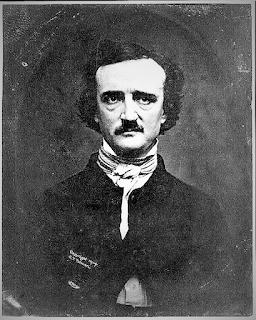The Farmhouse On 84th Street and Broadway
- dthholland

- Jun 4, 2024
- 5 min read
Updated: Oct 10, 2024

Many of us have likely walked past the site where this old farmhouse once stood, unaware of its existence or historical significance. In the latter half of the 18th century, Manhattan’s upper regions were dotted with a mixture of working farms and elegant country estates. One such farmhouse stood on a rocky knoll, roughly halfway between the Hudson River and Bloomingdale Road (which later became the Boulevard and then Broadway), at what would later be 84th Street. Originally, it was a modest two-storey frame house with a peaked roof. At some point, possibly due to the needs of a growing family, a smaller extension was added to increase the living space.
Local legend claims that this house was used by George Washington and his generals during the American Revolution, though such claims were common among structures in the area. However, one of its later tenants would draw much more lasting attention.
Around 1830, the 216-acre farm was purchased by Patrick Brennan and his wife, Mary Elizabeth. The Brennans had six children (though some sources suggest the number could be as high as 10). In June 1843, they took in three boarders—writer and poet Edgar Allan Poe, his ailing wife, Virginia, and her mother, Maria Clemm. According to Poe biographer Christopher P. Semtner, Mrs Brennan admitted that she might have refused to let them stay, had Poe not pleaded so movingly on Virginia’s behalf, as she was gravely ill with tuberculosis.

Virginia had been diagnosed with the disease in 1842, and Poe himself was also unwell, suffering from what was then termed consumption. As recorded by Dr. Appleton Morgan in a 1920 article, Poe had been advised to seek out summer lodgings in the old farmhouses along the Hudson River, as they were both more affordable and healthier than the congested urban areas of Amity Street and Waverley Place. Thus, the Poe family found their way to the Brennan farmhouse, spending the summers of 1843 and 1844 there. Martha Brennan, about 10 years old at the time, later recalled that the Poes occupied a double room on the second floor with windows offering views of both the Hudson River and Bloomingdale Road. Mrs Clemm stayed with them, retiring to a smaller room on the ground floor at night.
Poe and Virginia Clemm were first cousins. He was 26 and she just 13 when they married.
Poe was known to be fond of children, and young Martha would often lie at his feet while he wrote. She later recounted how Poe, with characteristic eccentricity, would turn the pages of his writing face-down on the floor, and she would playfully arrange them in order based on the page numbers.
It was during this time that Poe wrote one of his most famous works, "The Raven." Above the door to his and Virginia's room was a small shelf holding a plaster bust of Minerva. According to General James Rowan O’Beirne, who would later marry Martha Brennan, this shelf likely inspired the "bust of Pallas" that features in the poem. When Poe finished the poem, he read it aloud to Mary Brennan and other members of the family before it was published in January 1845 in the New York Mirror.

Patrick Brennan was no ordinary farmer; he ran a successful coal business in Bloomingdale and was involved in local politics, although he never sought public office. A devout Roman Catholic, he was known for supporting the construction of churches and other charitable institutions. In 1854, the farmhouse narrowly escaped destruction when it was struck by lightning during a violent storm. The New York Herald reported that the entire family was stunned but unharmed, while every window in the house was shattered, and two large trees outside were split.
One of the Brennans' sons, Thomas, was only a toddler when the Poe family stayed with them, but he later recalled watching Poe draw designs in the dust with his cane. Thomas would go on to have a distinguished career, first attending St. Theresa College in Montreal and later serving as Commissioner of Charities and Correction in New York, overseeing significant reforms in public health and welfare.

Martha Brennan married James Rowan O’Beirne, who went on to distinguish himself during the American Civil War and played a role in the pursuit of John Wilkes Booth following Abraham Lincoln's assassination. Patrick Brennan, meanwhile, continued to grapple with the changing landscape of New York City. In 1864, he contested the taxes levied against his property at the corner of 84th Street and Broadway, eventually winning a refund.

Despite his frustrations with the urbanisation of his surroundings, Patrick remained devoted to his family. According to Martha, he was particularly tender with his ailing wife, often carrying her from room to room and ensuring her comfort in her final years.
The farmhouse had another brush with fame when Mary Brennan discovered that Poe had scratched his name into the mantelpiece of his room. O’Beirne recalled how Mary, typically meticulous about the upkeep of the carved wooden mantel, was initially vexed by the defacement. However, when she confronted Poe, he smiled and apologised.

Poe's time at the farmhouse was marked by his habit of wandering through the surrounding woods and sitting by the river for hours. According to Dr. William Hand Brown, Poe would often sit atop a large rock, later dubbed "Mount Tom," in what is now Riverside Park. As the population grew and the area around 84th Street developed, the need for police protection increased. From 1865 to 1867, Patrick Brennan leased an outbuilding on the property as a temporary police station.
Patrick Brennan died in the house in December 1870, and his funeral was held there before a requiem mass at the Church of the Holy Name of Jesus. Two years later, another funeral was held for Martha and James O’Beirne’s young daughter, Mary Eliza, who died at the age of three.

By the late 19th century, the Brennan family had left the farmhouse, and the area was rapidly being transformed. In 1888, dynamite blasts were used to flatten the rocky landscape where the house had stood. As the demolition drew near, relic hunters descended on the house, prying away pieces of wood, plaster, and bricks. One such relic, the mantel from Poe’s room, was sold to a collector named William Hemstreet, who later donated it to Columbia University. For many years, it languished in storage, but today it resides in the university’s rare book library, a small but tangible reminder of the farmhouse’s storied past.

Within a few decades of its demolition, the memory of the Brennan farmhouse had faded from public consciousness. The house, which once stood at the heart of an evolving New York, became another casualty of the city's relentless march towards modernity, its legacy surviving only in fragments—both literal and literary.






































































































